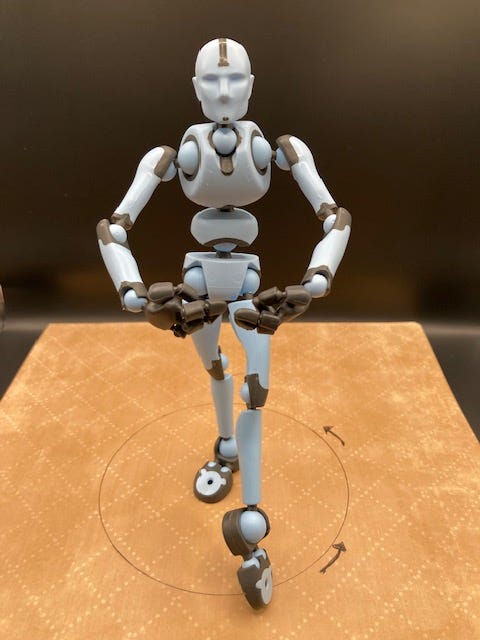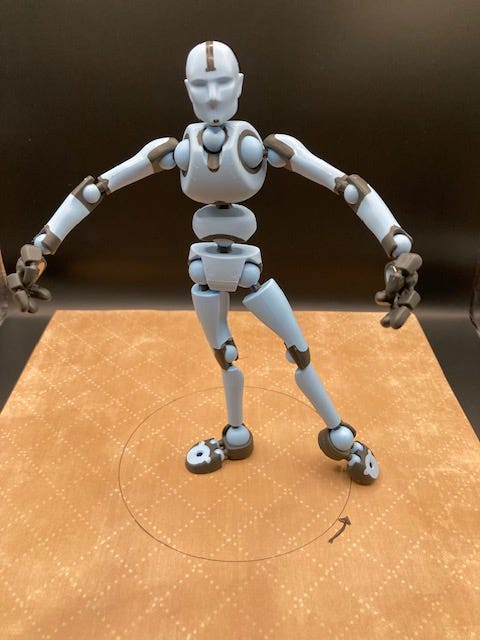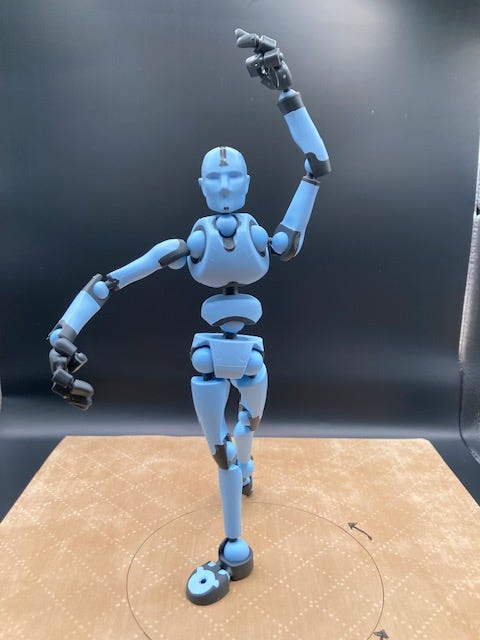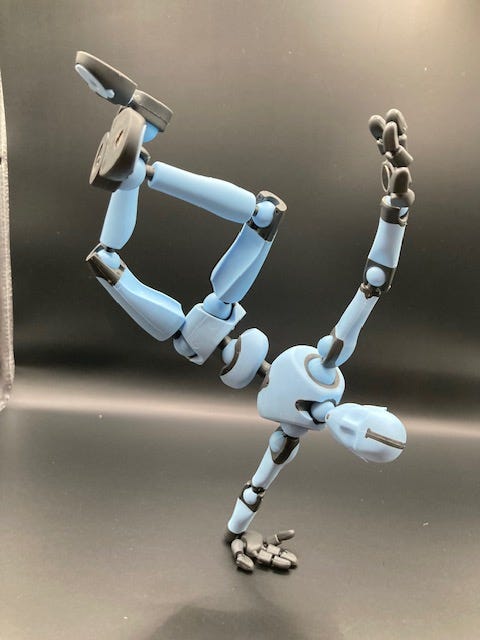French For Dancers Newsletter: Rond de Jambe
French For Dancers
Demystifying dance terminology and steps for dancers and dance-lovers!
Issue 7: Rond de Jambe
Bonjour! Welcome to French For Dancers!
Each newsletter, we will look at a dance term, its pronunciation, meaning, use. Often, different dance techniques will use varying terminology for the same step, so I will try to include those, too.
We’re heading back to the barre and working on Rond de Jambe!
Parlez-Vous Ballet?
(Do you speak Ballet?)
ROND DE JAMBE
(ron-duh-jomb)
The ‘d’ in “rond” is silent and not pronounced separately from the ‘d’ in “de.” The ‘b” in “jambe” should be pronounced (unlike the English silent ‘b’ in “lamb”).
Rond de Jambe means a circle of the leg:
· Rond means round or circle
· De means of
· Jambe means leg
In a rond de jambe (RDJ), the working foot traces a half circle from the front to the back, or the back to the front in a half-moon or D-shape, passing through 1st position. As you do in tendu, lead with the heel as the foot moves forward or backward in the RDJ. The big toe should stay on the ground the whole time (if the RDJ is à terre) to prevent sickling the ankle.
En dehors (outside/outward): beginning in 1st, 3rd, or 5th position, slide the leg forward to a tendu front position. Circle the leg to the side, and then to the back. Brush the leg through 1st position to take a second circle, or close into 1st, 3rd, or 5th (with the working leg closing back).
En dedans (inside/inward): this reverses the direction, beginning to the back and circling through the side to the front.
RDJ is an important step to warm up and stabilize the hips and pelvis, as well as strengthening the legs, hips, and core muscles. It helps increase flexibility in the hips and lengthens the hamstrings.
This movement can be done on the ground (à terre or par terre) or lifted in the air (en l’air).
The Grand Rond de Jambe is done at 90 degrees or higher. We’ll look at that and Rond de Jambe en L’Air in more detail in later issues.
Spelling/grammar tip: the plural of rond de jambe is ronds de jambe, not rond de jambes (multiple circles, not multiple legs!).
Savoir-Faire
(Know-How)
Student Tip:
For the standard RDJ preparation, demi-plié both legs in the starting position. Holding the plié on the supporting/standing leg, brush the working leg forward to tendu front, with the working arm moving to 1st position. The working foot then traces a ¼ circle to the side while the standing leg straightens, and the working arm also opens to 2nd position. The working arm and leg should move together, one over the other.
Focus on maintaining turnout throughout the exercise in both legs – the standing leg is working just as hard to create and keep stability while the working leg moves through the range of positions.
Some teachers may ask for a pas de cheval (step of the horse) or petit developpé (small unfolding) in this preparation as the foot initially moves forward.
Teacher Tip
RDJ often feels like the first time we get to “dance” at the barre. Dancers are starting to feel more warmed up at this point, and ready to move more fluidly. RDJ combinations can incorporate more upper body work with port de bras (carriage of the arms), and artistic elements such as épaulement (movement through the shoulders) or cambré (bend).
As strength and mastery of the basic step improves, leg speed and height can be added into the combination. Introduce one variable at a time (speed or height) so that the students can focus on each new challenge as it comes.
À La Carte
(From the Menu)
Recommendations, reflections, and/or useful links
It’s Olympics time! Not only do I love the Olympics, but they’re being held in my beloved Paris this year – je suis ravie (I am delighted)! I was quite emotional watching the opening ceremonies, seeing thousands of incredibly talented athletes from around the world float past Paris’ historic buildings, and watching the gorgeously absurd and very Parisian spectacle!
Did you know that Breaking (formerly known as breakdancing) is a new Olympic sport this year? How cool is that?! It debuted as a Youth Olympic sport in 2018 in Buenos Aires. The B-Boys and B-Girls, as the dancers are known, will be battling it out in the Place de la Concorde (where Louis XVI and Marie-Antoinette met their demise in 1793).
If you’re interested in following the Breaking schedule (August 9 & 10) and watching a brief explainer video, here’s a link!
My friend Bleu couldn’t resist giving it a try, too!
Merci!
(Thank you!)
Thank you for reading this newsletter! If you have friends who might enjoy this, please share the link with them!
- Peggy








